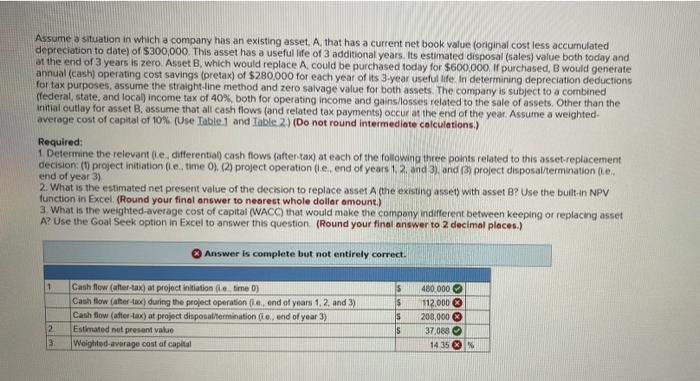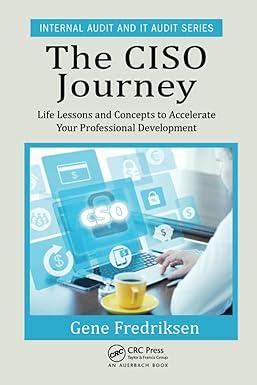Assume a situation in which a company has an existing asset. A that has a current net book value (original cost less accumulated depreciation to date) of $300,000 This asset has a useful life of 3 additional years. Its estimated disposal (sales) value both today and at the end of 3 years is zero Asset B, which would replace A. could be purchased today for $600,000. If purchased, B would generate annual (cash) operating cost savings (pretax) of $280,000 for each year of its 3-year useful life. In determining depreciation deductions for tax purposes, assume the straight line method and zero salvage value for both assets. The company is subject to a combined (federal, state, and local) income tax of 40%, both for operating income and gains/losses related to the sale of assets. Other than the initial outlay for asset B, assume that all cash flows and related tax payments) occur at the end of the year. Assume a weighted average cost of capital of 10% (Use Table 1 and Table 2) (Do not round intermediate calculations.) Required: 1 Determine the relevant file, differential) cash flows after tax) at each of the following three points related to this asset-replacement decision: () project initiation (e.time ), (2) project operation de end of years 12 and 3) and (3) project disposal/termination (e. end of year 3) 2. What is the estimated net present value of the decision to replace asset A (the existing asset) with asset B? Use the built-in NPV function in Excel (Round your final answer to nearest whole dollar amount.) 3. What is the weighted average cost of capital (WACC) that would make the company indifferent between keeping or replacing asset A? Use the Goal Seek option in Excel to answer this question (Round your final answer to 2 decimal places.) Answer is complete but not entirely correct. 1 Cash flow (after-tax) at project initiation time 0) Cash flow (ather tax) during the project operation (ie, end of years 1, 2 and 3) Cash flow (after-tax) at project disposalemination (le, end of year 3) Estimated not present value Weighted average cost of capital $ Is S S 480.000 112.000 208,000 37,088 2 3 14 35







